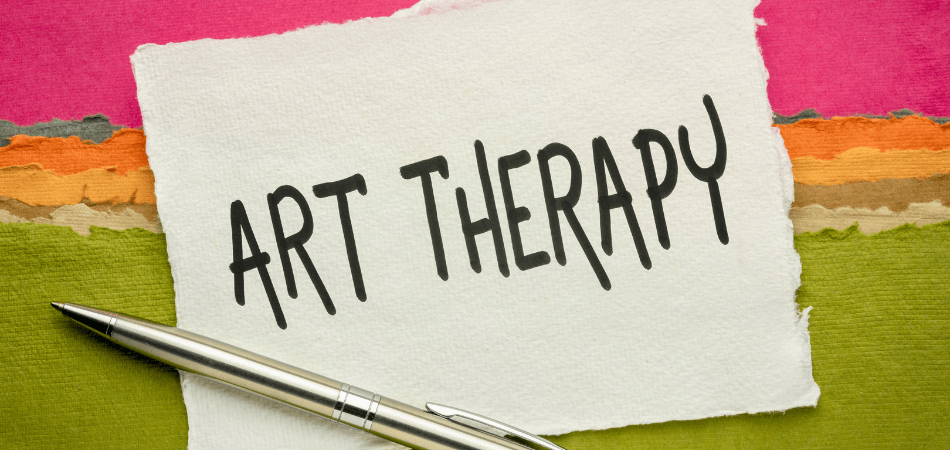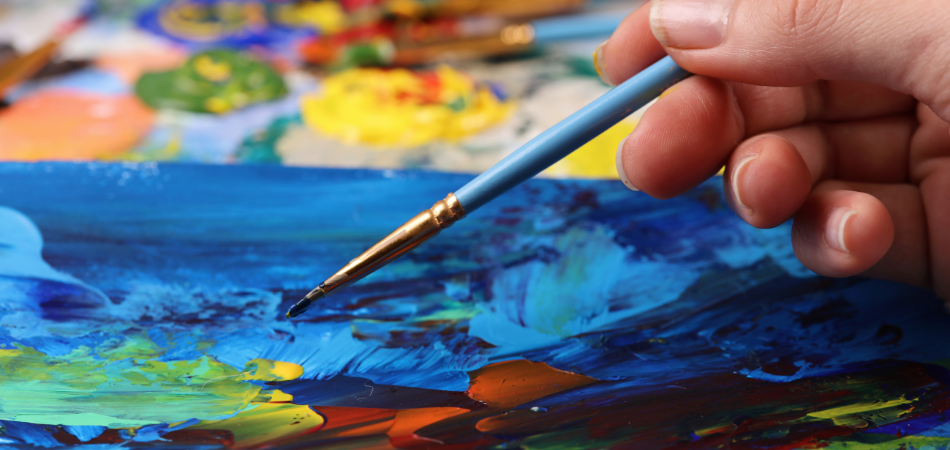
Written by:
Last Updated:
March 10th, 2025
Art Therapy | Benefits and How it is Implemented
Art therapy helps our clients to express their feelings about their substance use, relieve stress during difficult moments and explore new ways to cope with thoughts and emotions that can lead to relapse. In unison with the other therapies offered in rehab at Primrose Lodge, art therapy can make a huge difference in the recovery process. We offer a creative outlet to express yourself and explore your feelings about addiction which can significantly improve your chances of recovery and reduce the risk of relapse.
What is art therapy?
Art therapy is based on the belief that by expressing themselves through art, people can explore, understand and control their emotions and behaviours. This can help you to communicate thoughts and feelings that may be difficult to put into words. This, in turn, can help with the following:
The core belief behind art therapy is that through artistic expression, people can develop greater control and understanding of their behaviours and emotions. Art therapy provides a way to communicate feelings and thoughts that may be hard to express verbally, which can enable you to:
- Deal with negative emotions in a healthy way
- Gain new insights into yourself
- Develop new ways of coping with difficult situations
- Stay physically and mentally relaxed
- Connect with yourself on a deeper level
What are the benefits of art therapy in addiction treatment?
Art therapy is a versatile treatment method that can be used during detox, rehab, and aftercare to help people recover from addiction. It is an effective recovery tool because it addresses the unique causes and triggers of each person’s addiction.
This therapy provides an outlet to understand and cope with addiction, which in turn helps improve your mental and emotional health. It can be a refreshing break from traditional addiction therapies while still providing the same benefits, such as reducing stress levels, recharging your batteries and feeling more connected to sobriety – all of which reduce relapse risk.
As one of our former clients explains:
“I have always had trouble speaking about my feelings as they often get mixed up in my head, making it hard for me to understand what I’m going through. But through art, I found a way to express myself safely. Not only that, but I actually enjoyed art and found that it really helped to relax me. So after l left rehab, I kept practising.”
What are some common art therapy exercises for addiction?
The exercises used varies depending on what your aims are and what’s going to work best for you. It could be something as easy as doodling in a personal notebook or might entail creating pieces with specific therapeutic guidelines.
The process is always done with the help of a therapist who will collaborate with you, guide you, and offer support while encouraging you to think about the connection between your artwork choice and your addiction.
Here are some art therapy exercises for addiction:
Gestalt Method
With the Gestalt Method, your therapist will work with you to help you identify and express your feelings and experiences. The artwork produced can also be used as an introduction to a deeper conversation where you talk about your artwork and what it means to you.
Active Imagination Method
The Active Imagination Method uses creativity and art mediums as a starting point to encourage you to let your mind roam freely and spontaneously. This opens the door to further discussion with your therapist about your artwork, the meanings behind it and how it relates to your addiction.
Third-Hand Method
With the Third-Hand Method, your therapist is active in assisting you to produce a meaningful piece of work. While you are in control of the overall vision of the art, this method is helpful when you are struggling with a starting point or are unsure of how to express what you are feeling.
How does art therapy complement other addiction therapies at Primrose Lodge?
Primrose Lodge, art therapy is used in conjunction with various other addiction therapies as part of our overall recovery programmes. These include:
Art therapy and 12 step
The 12 step programme is vital for treating addiction, and art therapy can be used to support this process. As people work through the 12 steps, they may feel intense emotions that are easier to express and deal with through artwork. Also, some of the steps involve self-reflection and exploring how your addiction has impacted you and others.
Art therapy and Cognitive Behavioural Therapy (CBT)
CBT focuses on understanding how your thoughts, feelings, and behaviours are connected and can be used to help maintain sobriety. Art therapy can be used as part of this treatment process to explore underlying issues in more depth. For example, if you are struggling to identify or express your feelings, art therapy can help to open up the conversation about these emotions.
Art therapy and Dialectical Behavioural Therapy (DBT)
DBT is a type of Cognitive Behavioural therapy which helps with emotion regulation, distress tolerance and interpersonal effectiveness. Through various art activities, your therapist can help you to identify thoughts, feelings and behaviours that are connected to your addiction.
The next step
At Primrose Lodge, we believe in a holistic approach to addiction recovery and art therapy is an important part of this process. Our experienced therapists understand the power of creativity in unlocking emotions, helping you to understand your addiction and create positive changes. If you are interested in learning more, please don’t hesitate to contact us. We are here to help you on your journey towards recovery and healing.
Frequently asked questions
Disclaimer:
The availability of therapies may vary across UKAT centres. The specific therapies provided will be determined based on your treatment plan and the programme offered at your chosen facility. All treatments are subject to clinical assessment and programme availability at the time of admission. For further details on the therapies included in your treatment plan, please contact our admissions team.




